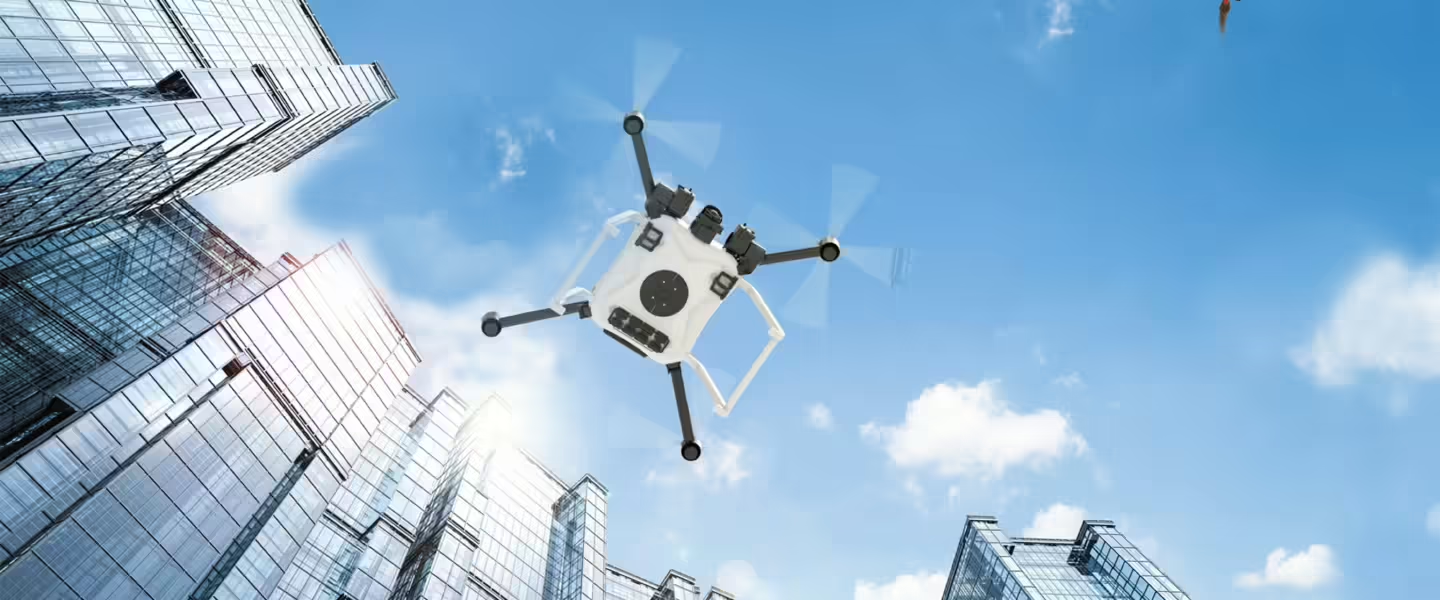Welcome to Saturday Hashtag, a weekly place for broader context.
|
Listen To This Story
|
By 2035, autonomous device technology is expected to be a $10 trillion industry with around 900 million autonomous units in operation. Over 75 percent of these will operate on Level 3 and Level 4 systems (conditional or full autonomy).
While household robots — including vacuums, lawnmowers, companionship, and elderly assistance robots — will make up the bulk of units, mobility will be the largest market at $4.1 trillion.
From 2020 to 2024 alone the global UAV industry (unmanned aerial vehicles, drones, and autonomous systems) has increased 52 percent to $37.68 billion.
The enormous growth in UAV technology is impacting every aspect of society. It is reshaping all military, law enforcement, and municipal operations as well the entire spectrum of civilian enterprises.
Today, armed dogbots and aerial drones are significantly impacting the war in Ukraine.
The Defense Advanced Research Projects Agency’s (DARPA) OFFSET and RACER programs along with nano drones have already changed US in-theater military operations.
Law enforcement is expanding the use of this tech all over the country. In New York City UAVs are warning residents about natural disasters, and a drone fleet will soon be surveilling Central Park as well as the streets of Champaign, IL.
UAVs that can remain aloft indefinitely are also opening up a new level of monitoring. You can check on your local police’s UAV surveillance technology here.
While this tech can benefit many government and commercial areas like, border security, infrastructure, disaster, construction, and agriculture management, it also has the capacity to create systemic vulnerabilities and to obliterate the reasonable expectation of privacy in public spaces.
Not only can it record and identify individuals on grocery store trips, it can also document and analyze municipal crowd activities, like political protests.
Systemic vulnerabilities from UAV tech in the civilian and national security arena include:
- No comprehensive federal legislation for AI liability.
- Intelligent swarms that can effectively attack US infrastructure.
- Chinese-made commercial UAVs in the US that are a threat to national security.
- UAVs that can diminish the effectiveness of military aircraft carriers and stealth bombers.
The endlessly expanding collection of security and civil rights issues generated by UAV innovation has resulted in some state legislation and federal regulation, but a global regulatory framework is necessary to properly address this problem.
Meet the Air Force’s Secretive Long-Range Drone That Flies For Days
From Defense One: “The U.S. Air Force is getting closer to realizing its vision of low-cost surveillance drones with an autonomous drone that can fly for more than three straight days. And it’s already flying missions in the Middle East. The Ultra Long-Endurance Tactical Reconnaissance Aircraft, or ULTRA, was operating in the shadows until U.S. Central Command in May inadvertently revealed that the drone was deployed in the Middle East by releasing pictures of it at Al Dhafra Air Base in the United Arab Emirates.”
What’s Next for Drones
From MIT Technology Review: “Drones have been a mainstay technology among militaries, hobbyists, and first responders alike for more than a decade, and in that time the range available has skyrocketed. No longer limited to small quadcopters with insufficient battery life, drones are aiding search and rescue efforts, reshaping wars in Ukraine and Gaza, and delivering time-sensitive packages of medical supplies. And billions of dollars are being plowed into building the next generation of fully autonomous systems. These developments raise a number of questions: Are drones safe enough to be flown in dense neighborhoods and cities? Is it a violation of people’s privacy for police to fly drones overhead at an event or protest? Who decides what level of drone autonomy is acceptable in a war zone?”
Swarm of Micro Flying Robots in the Wild
The author writes, “Aerial robots are widely deployed, but highly cluttered environments such as dense forests remain inaccessible to drones and even more so to swarms of drones. In these scenarios, previously unknown surroundings and narrow corridors combined with requirements of swarm coordination can create challenges.”
Top 10 World’s Best Military Drones in 2024 and Their Capabilities
From Aerotime: “Forget your fighter jets and stealth bombers, decommission your ground attack aircraft; lay off your pilots and, with the gentle touch of a command console, switch to autonomous mode. We need as little involvement from squishy human beings as possible because unmanned aerial vehicles (UAVs) are where the future of aerial warfare is at. Or is it?”
‘Hellscape’ Swarms Could Be a Cost-Effective Taiwan Defense, Says Report
The author writes, “A new report from the Center for New American Security calls for a push for low-cost drones that would provide an autonomous, lethal shield against an amphibious invasion of Taiwan by the Chinese People’s Liberation Army Navy. ‘Given their extremely low cost, Taiwan should build large numbers of these simple systems and invest in technologies that could provide autonomous terminal guidance for contested environments,’ reads the report.”
The Microrobots of Tomorrow Could Fly Better Thanks to Beetle’s Effortless Wing Deployment
The author writes, “Rhinoceros beetles effortlessly deploy and retract their wings without using their muscles, according to international researchers, who say the discovery of how this is achieved could help with the development of microrobots that can operate in limited or cluttered spaces. The team found that the delicate membranous hindwings of the beetles are released in a spring-like fashion by their hardened forewings — known as elytra — and a flapping motion then brings the hindwings into a raised flight position. They then created microrobots that mimic the beetle wings’ passive deployment, which were able to successfully take off and maintain flight.”




